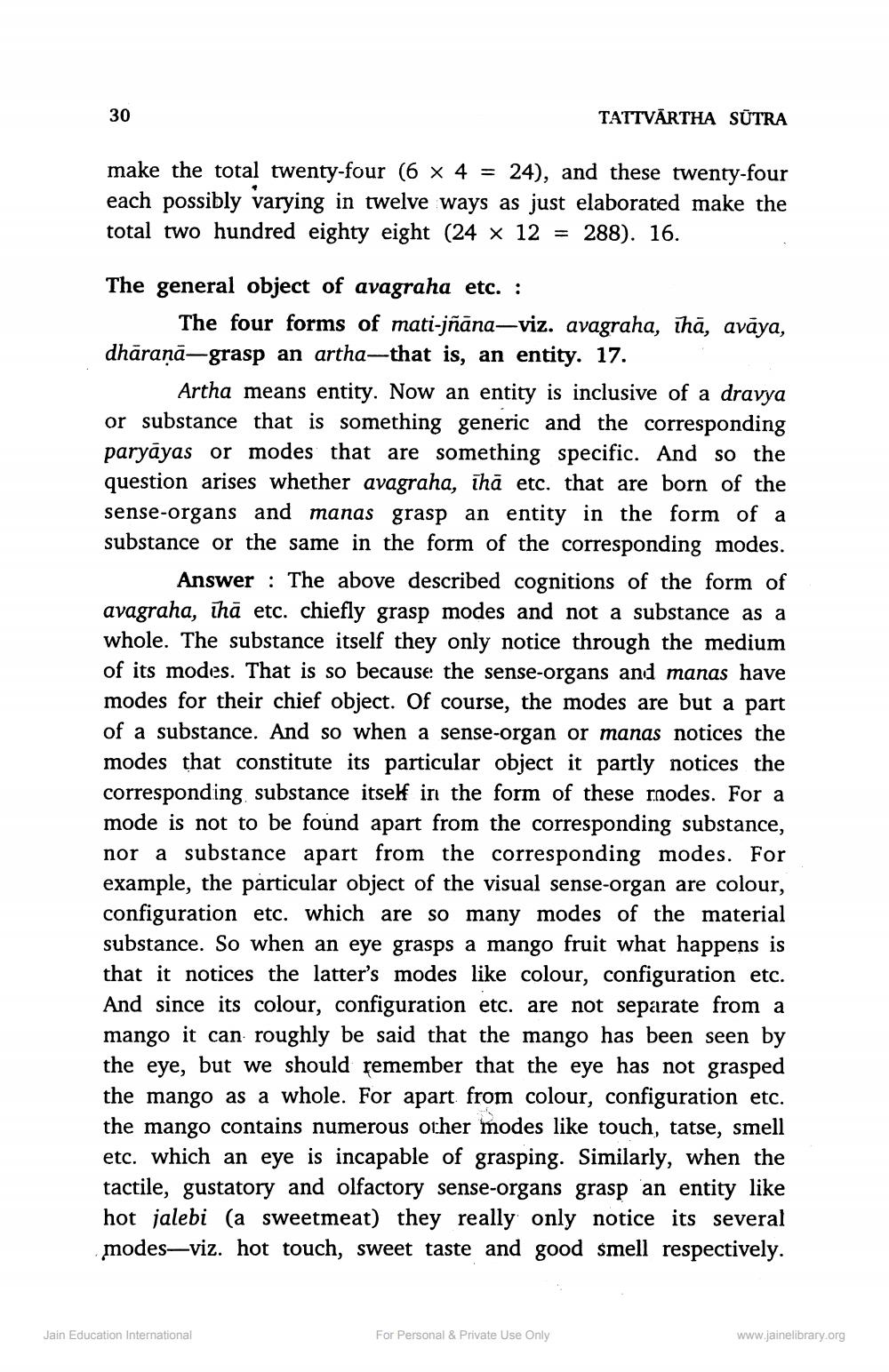________________
30
TATTVĀRTHA SŪTRA
make the total twenty-four (6 x 4 = 24), and these twenty-four each possibly varying in twelve ways as just elaborated make the total two hundred eighty eight (24 x 12 = 288). 16.
The general object of avagraha etc. :
The four forms of mati-jñāna—viz. avagraha, Thā, avāya, dhāraṇā-grasp an artha—that is, an entity. 17.
Artha means entity. Now an entity is inclusive of a dravya or substance that is something generic and the corresponding paryāyas or modes that are something specific. And so the question arises whether avagraha, īhā etc. that are born of the sense-organs and manas grasp an entity in the form of a substance or the same in the form of the corresponding modes.
Answer : The above described cognitions of the form of avagraha, thā etc. chiefly grasp modes and not a substance as a whole. The substance itself they only notice through the medium of its modes. That is so because the sense-organs and manas have modes for their chief object. Of course, the modes are but a part of a substance. And so when a sense-organ or manas notices the modes that constitute its particular object it partly notices the corresponding, substance itself in the form of these modes. For a mode is not to be found apart from the corresponding substance, nor a substance apart from the corresponding modes. For example, the particular object of the visual sense-organ are colour, configuration etc. which are so many modes of the material substance. So when an eye grasps a mango fruit what happens is that it notices the latter's modes like colour, configuration etc. And since its colour, configuration etc. are not separate from a mango it can roughly be said that the mango has been seen by the eye, but we should remember that the eye has not grasped the mango as a whole. For apart from colour, configuration etc. the mango contains numerous other modes like touch, tatse, smell etc. which an eye is incapable of grasping. Similarly, when the tactile, gustatory and olfactory sense-organs grasp an entity like hot jalebi (a sweetmeat) they really only notice its several modes—viz. hot touch, sweet taste and good smell respectively.
Jain Education International
For Personal & Private Use Only
www.jainelibrary.org




